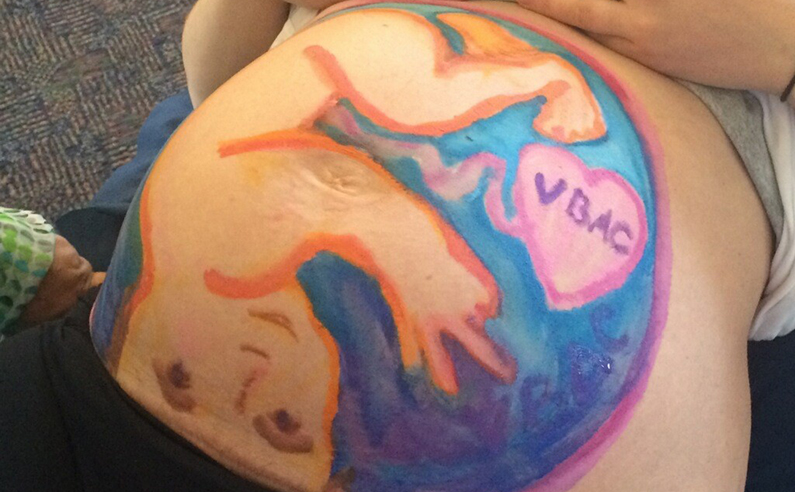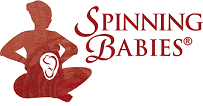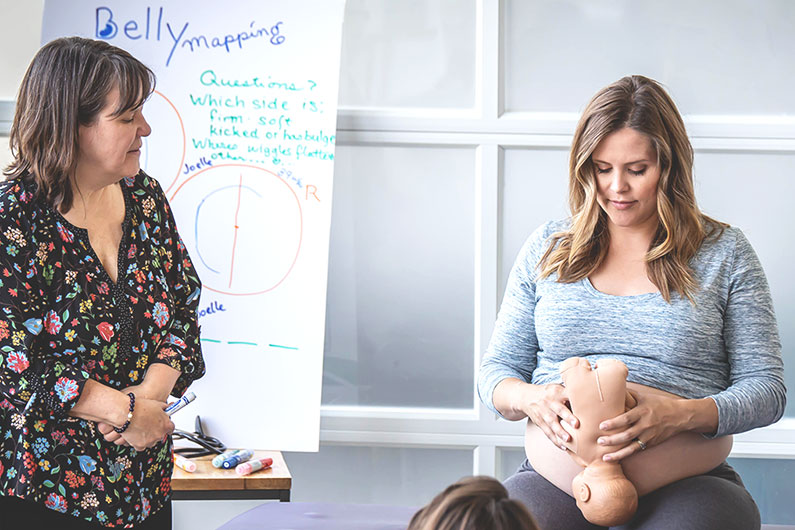Prenatal bonding can improve parents’ caring behavior for their babies, and increase postpartum attachment. With stronger attachment, parents give more time in face-to-face eye contact with baby. Together we can help nurture an entire generation of parents with more intact attachment to their infants.
Prenatal Bonding Recommendations
It’s interesting to me to read recommendations for boosting prenatal bonding. Boryri et al. dehttps://www.spinningbabies.com/wp-content/uploads/2019/10/sample3-1.pngs the “Mother-child bond is mother’s feeling of intimacy, calmness, protection, and concerns about the health of the child.” A provider might see evidence of the bond as a parent “looking, smiling, touching and talking to the baby” (Franc, 2009). Mothers’ with higher attachment to their babies are often more sensitive to their needs. The famous researcher on attachment, JT Condon, found adverse factors reducing bonding behaviors were depression, lack of social support and a domineering partner.
Today we have a societal crisis of opioid and other substances abuse which also harms pregnant women and babies. Jessup found that parental caregiving motivates mothers to recover from substance use disorders (Jessup, 2014). Stronger maternal-fetal attachment has been linked with favorable prenatal health practices and better neonatal outcomes among low-income women (Alhusen et al., 2012). Being able to imagine the baby inside as a real and separate person reduces relapse into substance use (Pajulo et al., 2012, 2015), and offers more sensitive caregiving (Camoirano, 2017) among parenting women with substance use disorders.
Recommendations from Jussila (2019) are group sessions with pregnant parents and teaching the acceptance and manner of touching the belly and talking to the baby. Boryri (2016) invites pregnant parents to “focus on the fetus” as a way to increase similar behaviors after birth when mothers talk and look at their babies more. A doula is a proven “intervention” boosting the social support requirements for better pregnancy outcomes. Yes, I’m calling social support a requirement. It’s well-proven.
Campbell (Campbell, 2006) noted that third trimester ultrasounds don’t increase bonding compared to the 20-week ultrasound. Supposing the reason is a lack of sweetness in the 3D ultrasound Campbell hoped for improvements with higher technology in the 4D ultrasound. An earlier finding by Ji and Pretorius showed improvement of bonding as the ultrasound image of the baby improved. I do notice parents increase at least an immediate interest in their children as the people around them offer celebratory comments and attention on their baby.
Activity for Prenatal Bonding
A provider often palpates and diagnoses the fetal position with “Leopold’s Maneuver” – a simple process of feeling what is in the womb with two hands on the belly. This is reassuring when the provider’s words and mannerism are reassuring. But there is an absence of the parents’ interaction.
Belly Mapping®️
We’ve discovered my process of parent-led Belly Mapping®️ is a way a layperson can facilitate a pregnant person’s connection to their baby inside. Family Therapist Phyllis Klaus cites the importance of Belly Mapping as one of many ways to move parents from the “dream baby” to a more “real baby” which her late husband Marshall Klaus, world-renowned pediatrician and (with John Kennell, MD) creator of the term “bonding” found important to reduce neglect and abuse after childbirth. Belly Mapping is a 3-part process that parents can use to estimate their baby’s position in the third trimester of pregnancy. I think about 80% of parents can estimate baby’s position most of the time. A placenta along the front of the womb might block the pregnant person’s sensations of baby’s movements.
More important than accuracy of fetal position is the bonding potential within Belly Mapping®️. Parents can read how to do Belly Mapping® on the website or buy the workbook. A provider, doula, or childbirth educator can ask the specially arranged questions that the pregnant parent(s) can feel their belly and tell the provider the answer. The point is their discovery of their child, not assuming an unwavering accuracy of baby’s position.

When the belly is painted or illustrated with henna or a non-toxic marker the visual representation of the baby ignites pride in the presence of the baby. Social recognition and value (Belly Mapping® is exciting) seem to increase awareness of the baby as a person in the family rather than a dream or concept. As Phylis Klaus says, “The real baby emerges.” A pregnant woman may delight in showing the colorful painting of her baby on her belly to her family and friends. Celebrating the miracle of life is an important shared community process which widens the bond and exalts the mother’s value in her social network. High regard also motivates enhanced caregiving behavior.
Spinning Babies® Certified Parent Educators are trained in Belly Mapping® and offer a three-hour Parent Class for parents. The Parent Educators support parents need for a small group to optimize their learning and bonding with each other and preparing to birth their babies.
Resources:
Association For Prenatal And Perinatal Psychology And Health
- APPPAH is a public-benefit educational and scientific organization offering information, inspiration, and support to medical professionals, expecting parents, and all persons interested in expanding horizons of birth psychology.
- APPPAH’s current references list for students and writers
Centering Pregnancy
- Why Centering? | Centering Healthcare Institute
- Care Models That Work: Centering Pregnancy (Group Prenatal Care)
Jennie Joseph
Phyllis Klaus Academy
- The online repository of Phyllis Klaus, LMFT, LMSW, licensed Marriage Family Therapist and Social Worker. Formerly on the faculty of the Department of Family Practice, Michigan State University and the Milton H. Erickson Institute, Santa Rosa, CA. Ms. Klaus currently teaches and practices in Palo Alto, California, providing psychotherapy, hypnotherapy and counseling. Working with the concerns of families in the perinatal period for over 37 years, Phyllis is an EMDR Institute Certified Therapist, Consultant, and Trainer. She is a Founder of DONA International and Pattch (Prevention and Treatment of Traumatic Childbirth).
- Phyllis Klaus’ Bonding and Birth handouts for providers and parents
References:
Boryri, T., Navidian, A., & Kian, R. (2016). The effect of training attachment behaviors on mother-child bonding after birth. Int J Adv Biotechnol Res, 7(3), 1204-10.
Boyette, A. H., & Gettler, L. T. (2019). Evolution and Human Fatherhood. The Oxford Handbook of Evolutionary Psychology and Behavioral Endocrinology, 179.
Campbell, S. (2006). 4D and prenatal bonding: still more questions than answers. Ultrasound in Obstetrics & Gynecology, 27(3), 243-244.
Franc N, Maury M, Purper-Ouakil D. ADHD and attachment processes: are they related? Encephale, 2009; 35(3): 256-261.
Jussila, H., Pajulo, M., & Ekholm, E. (2019). A Novel 4D Ultrasound Parenting Intervention for Substance Using Pregnant Women in Finland: Participation in Obstetric Care, Fetal Drug Exposure, and Perinatal Outcomes in a Randomized Controlled Trial. Maternal and Child Health Journal, 1-11.
Markova, G. (2019). The role of oxytocin in early mother-infant interactions: Variations in maternal affect attunement. Infant Behavior and Development, 55, 58-68.
Miró, J., de la Vega, R., Gertz, K. J., Jensen, M. P., & Engel, J. M. (2019). The role of perceived family social support and parental solicitous responses in adjustment to bothersome pain in young people with physical disabilities. Disability and rehabilitation, 41(6), 641-648.
Pereira, D. D. (2019). Parental bonding: Validity, stability and predictor of mental and physical health during pregnancy.
Further Reading:
Upcoming Workshops
[tribe_events_list limit=”4″]

